By John K. Bullard
Cruising Club of America Boston Station, Buzzards Bay Post
Besides my membership in the CCA, I have been fortunate to be a lifelong member of the OPYC — the Other People’s Yacht Club — and as such, have been fortunate to sail to some faraway places. After college, I joined the Burnes family in 1969 on a transatlantic race onboard Adele, a 45-foot Ted Hood-designed yawl. Later, we cruised the Irish coast accompanied by the Guinness family, who always had a keg of the “product” tied to their mizzen mast. With the Burnes family, I continued toward Lisbon, Cape Verde, and then back across “the pond” to Grenada, where I lived aboard for three months.
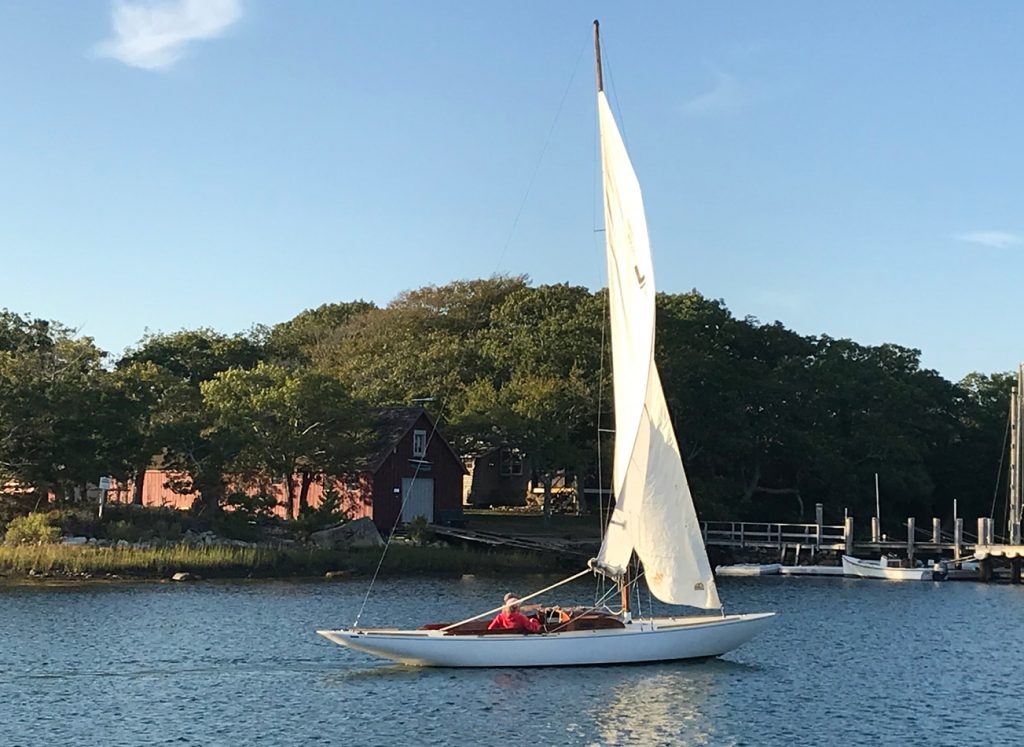
Evening sail, Hadley
Several years later, after completing graduate school and while working in New Bedford, I was asked to join George Lewis and his crew on the one tonner Lively for a year of hard racing. We campaigned in the national and world One Ton Cup championships, honing our skills against the best in the world.
I headed the Sea Education Association from 2002–2012, teaching college students the science and history of the oceans. During these years, I was fortunate to sail SEA’s brigantines in Polynesia, the Sea of Cortez, Hawaii, Sable Island, Bermuda, and other memorable points.
While I have loved these distant ports and am grateful for the opportunities that brought me there with other members of the CCA, the harbor that has the firmest grip on my heart, the one my wife Laurie and I love to get away to more than any other, happens to be a little more than ten miles from where we dock our boat in the port of New Bedford.
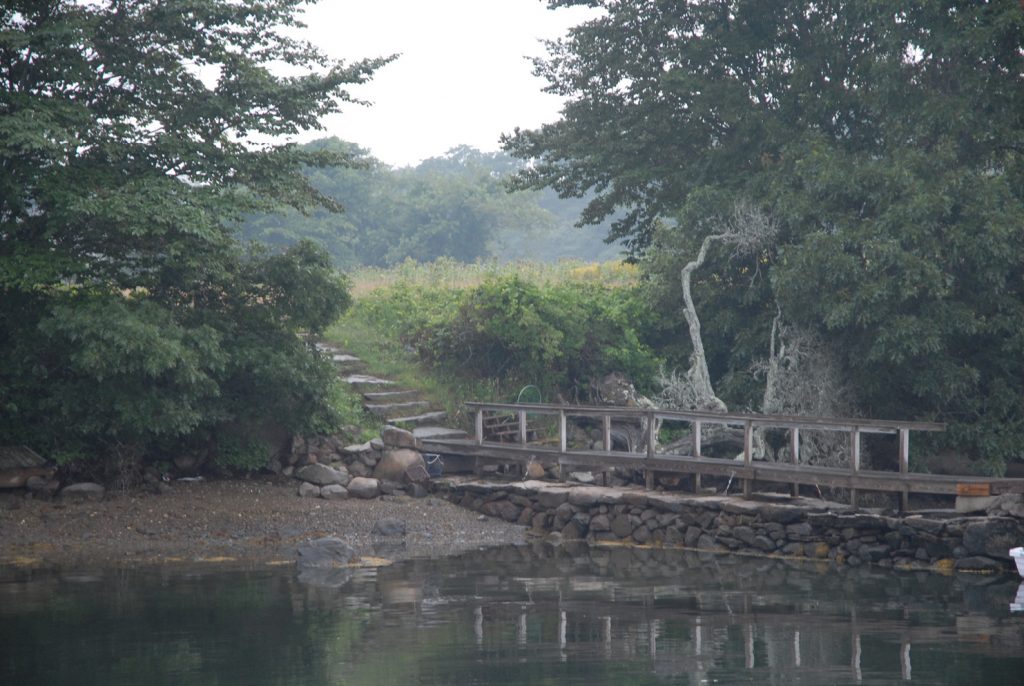
Hadley’s old oak
It is Hadley Harbor on Naushon Island, a place where time stands still, where you can catch your breath, slow your heart, and get in touch with yourself.
I had no idea this love story would develop when my father and mother took me on my first overnight sail to Hadley when I was six years old. They had a Yankee-class sloop named Tempest that had been a rare collaboration of three well-known boat designers, L. Francis Herreshoff, W. Starling Burgess, and Frank Paine. Tempest was beautiful, but I remember how cramped we were in this narrow, low-freeboard sailboat. We enjoyed swimming and happy hour with close friends, the Underwoods, on their Concordia sloop Kestrel. After dinner, as I was getting myself into my sleeping bag, I looked up through the companionway at the sail on top of the main boom. “Dad, I don’t remember putting a sail cover on the mainsail.”
“No, Johnny. The sail is covered in mosquitoes. You had best quickly zip up your sleeping bag.” Too late. I spent the night in a bag full of mosquitoes. Despite that first overnight on a boat, I fell in love with sailing. And with Hadley Harbor. Go figure.
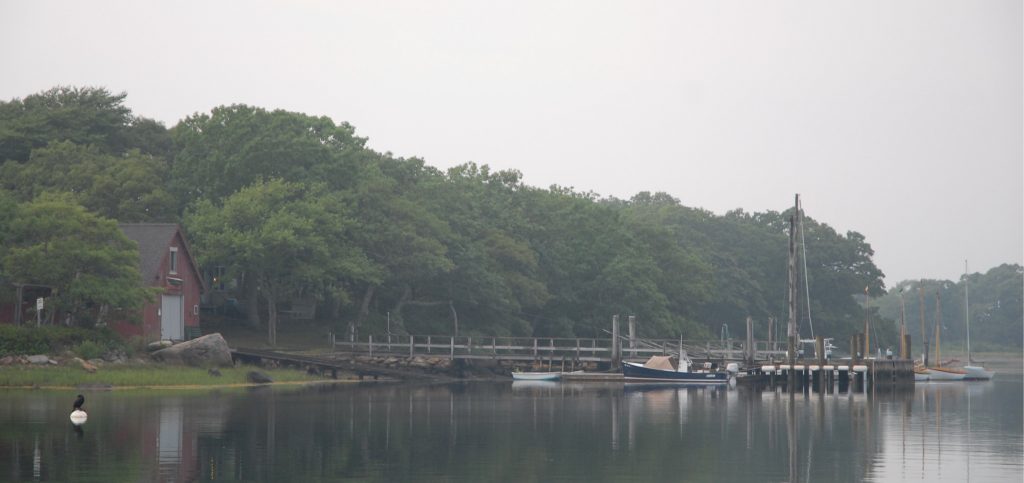
Hadley’s stillness
Of course, I was not the first to fall in love with Hadley. Or with Naushon. After the ice receded from Cape Cod and the islands 10,000 years ago, Paleo-Indians began occupying this newly available terminal moraine. Their descendants, the Pokanauket branch of the Algonquin tribe, settled these coasts and islands and began the heritage of stewardship that continues today. The Algonquin word nashin, meaning “in between,” can be ascribed to all the Elizabeth Islands, which lie between Vineyard Sound and Buzzards Bay, and more specifically to Naushon, which lies between the rushing waters of Woods Hole and Robinson’s Hole.
After thousands of years of his ancestors fishing and hunting this area, the Algonquin sachem Seayk sold Naushon — then called Catamucke, meaning “great fishing place” — to Thomas Mayhew and his son Thomas Jr. in 1654. The Mayhews had bought their rights from the British Crown, owing to the “discovery” in 1602 by Bartholomew Gosnold of Martha’s Vineyard and the Elizabeth Islands. Gosnold’s stay in Cuttyhunk and subsequent return to England led many local scholars to believe that Shakespeare’s Tempest was inspired not by Bermuda, as is commonly thought, but by Cuttyhunk.
In 1682, Wait Winthrop, grandson of Massachusetts’ first governor, bought the island. The Winthrop family owned it until 1730, when they sold it to James Bowdoin. The Bowdoins and others owned it until 1856, when John Murray Forbes bought Naushon and most of the other Elizabeth Islands. Now in the form of a trust, the islands are owned by the Forbes family.
Hadley Harbor is most likely named for John Hadley of England, who, in 1730, invented the octant, which greatly improved the art of navigation by allowing mariners to more easily calculate their latitude. Hadley had no local connection to Naushon.
Native Americans and these four families have strictly limited development of these islands. Development pressure has been especially intense during the Forbes family’s 160 years of stewardship. Since the Industrial Revolution, many nearby islands and locations have been developed to the point that they’d no longer be recognizable to their early inhabitants. Outdated septic systems fail to remove nitrogen and eutrophication, straining the rivers, watersheds, and bays we love by starving them of life-sustaining oxygen.
I’m on the board of the Buzzards Bay Coalition with Tally Garfield, a member of the Forbes family. As we work to save the bay (and Vineyard Sound), we recognize how fortunate we are that one side of the bay and sound is protected by the Elizabeth Islands chain, with its working farm, very few houses, and mature forest of oaks and beeches.
This is what has drawn Laurie and me to Hadley Harbor, first on the Concordia yawl Captiva, which we owned for 30-plus years, and now on our Shannon Voyager 36, Captiva II. We go whenever we can, even if our Saturday chores aren’t over until mid-afternoon, packing away some food and beverage, casting off the lines from Pope’s Island Marina in New Bedford, and sailing or powering across Buzzards Bay to Woods Hole. The trip is just long enough to leave mainland worries behind.
If it’s early or late in the season, we usually find one of the moorings that the Forbes family kindly puts out free of charge for visitors in the inner harbor. If we go in the summer and all the moorings are taken, there will always be a few spots to anchor. And there is plenty of room in the outer harbor, which is protected from most wind directions.
Once anchored, it’s time to let the endless attraction of Hadley take over. It could be the horses moving from one field to the next on Naushon. Or the setting sun illuminating the leaves on the southeastern shore. Or the great blue herons and egrets patrolling the harbor, “a great fishing place” since the days of the Native Americans. It is always fun to watch young families enjoy Hadley. Whether they are swimming, paddling, learning how to sail, or testing their rowing abilities, their joyful sounds carry over the water and take me back to my first night. I marvel that the mosquitoes aren’t as abundant as I remember. Ah, kids today. They don’t walk three miles uphill to school in the snow as I used to either!
Then there is the Cormorant. Not the bird, though there are plenty of those. Cormorant is a black and tan ferry that has been carrying the Forbes family, their employees, and guests, as well as their farm equipment, back and forth between Naushon and Woods Hole several times a day for decades. When its whistle blows, we watch the procession walk slowly downhill for the short ride back to reality.
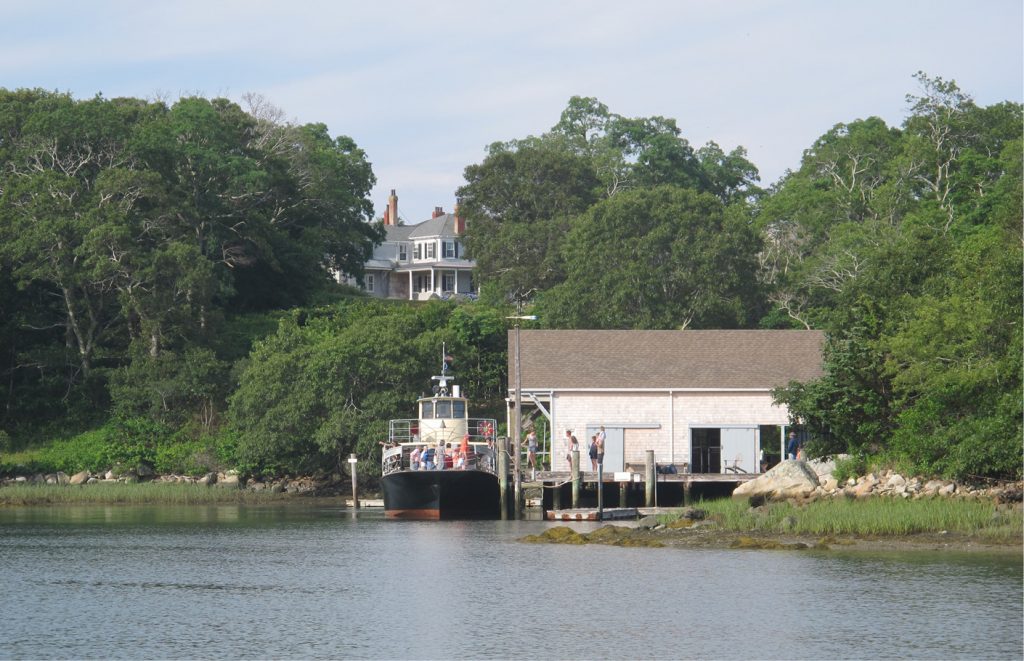
Cormorant loading in Hadley
We sit on deck after dinner and sip the last of the wine. Gradually the light fades, and it is harder to pick out details on the land. Individual leaves fade into branches, which give way to the dark shapes of trees. The first star I see turns into two, then ten, then a hundred, and finally the Milky Way finds its way up from the teapot’s spout. Ten miles from the hurley-burley of the mainland with its city lights, the universe surrounds us. We are in a magical place and ready for our dreams to take over. ■
John Bullard has been on or near the water most of his life, both professionally and recreationally. His career has included two stints at NOAA, most recently managing all living marine resources in federal waters from Cape Hatteras to the Canadian border. He also served as mayor of New Bedford for three terms, bringing the City into compliance with the Clean Water Act by building a modern wastewater treatment plant, which had a significant positive impact on Buzzards Bay. John served as President of Sea Education Association for 10 years. SEA teaches college students about the science, history and policies of the oceans including six weeks of an open ocean voyage.
He currently serves on the Boards of the New Bedford Ocean Cluster, the Buzzards Bay Coalition, the Westport Planning Board and he is working with the Commonwealth of Massachusetts to restore the historic schooner Ernestina/Morrissey. John serves on the CCA Environment of the Sea Committee.
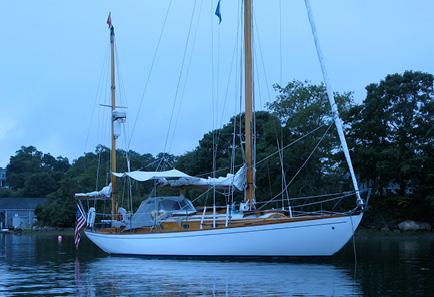
Concordia Captiva, Hadley Harbor
John started sailing with his parents at a young age and was racing Beetle Cats before he was 12. He raced through college and then did a couple of Transatlantics, a few Bermuda Races, a Halifax Race and a Miami Montego Bay Race. His racing career culminated with George Lewis on Lively as they finished seventh in the One Ton World Championships.
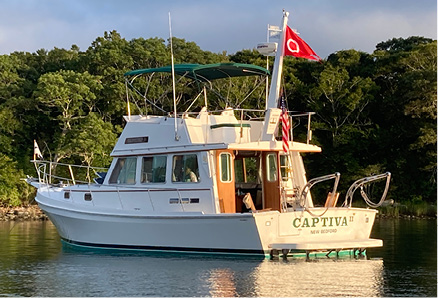
Shannon Voyager 36 Captiva II, Hadley Harbor
John and his wife Laurie have cruised their Concordia yawl, Captiva, throughout the Northeast for 35 years, finally succumbing to power three years ago.
Editor’s note: This article was originally published in the 2022 edition of Voyages, the Cruising Club of America’s annual publication, and is reprinted with permission. Special thanks to CCA Commodore Chris Otorowski and Voyages Editors Amelia & Robert Green.
The Cruising Club of America comprises more than 1,300 accomplished ocean sailors who willingly share their cruising expertise through books, articles, blogs, and onboard opportunities. Together with the Royal Bermuda Yacht Club, the CCA organizes the legendary Newport Bermuda Race. With active involvement and support from its 14 stations and posts around the United States, Canada and Bermuda, the club focuses significant national and international outreach efforts on ocean safety and seamanship training through hands-on seminars. For more information, visit cruisingclub.org.
